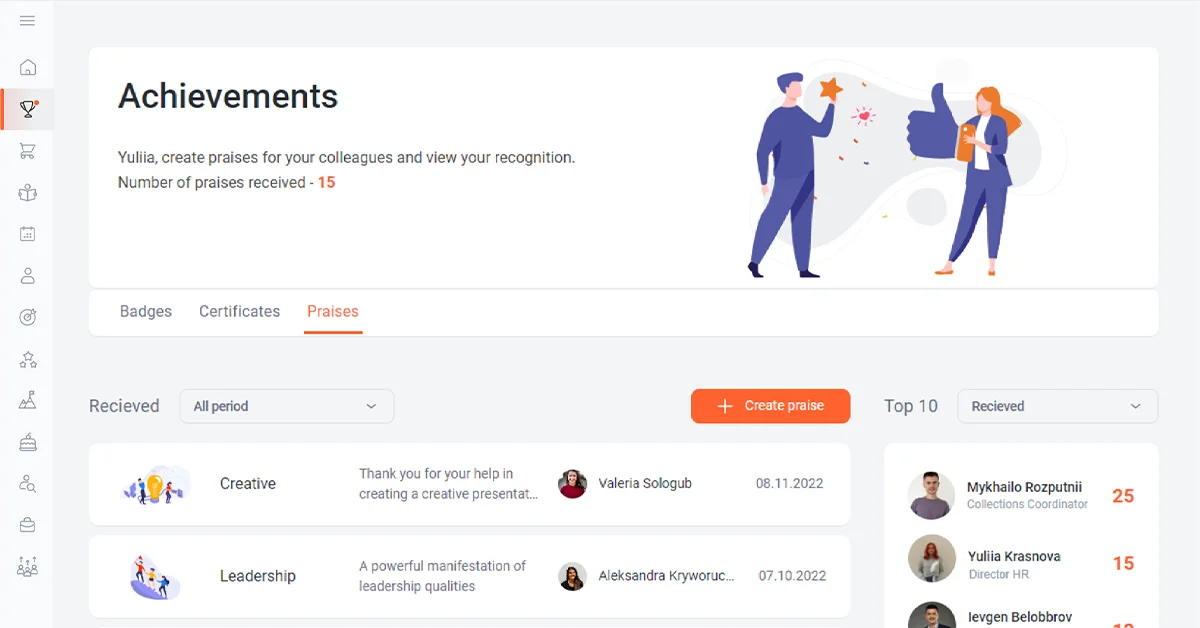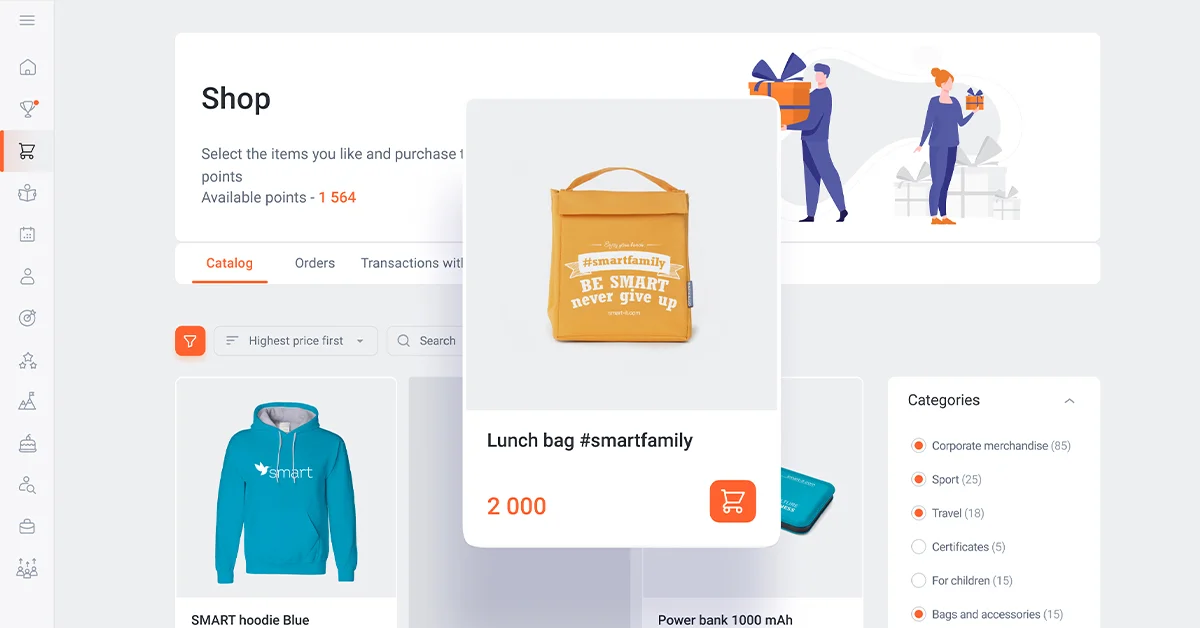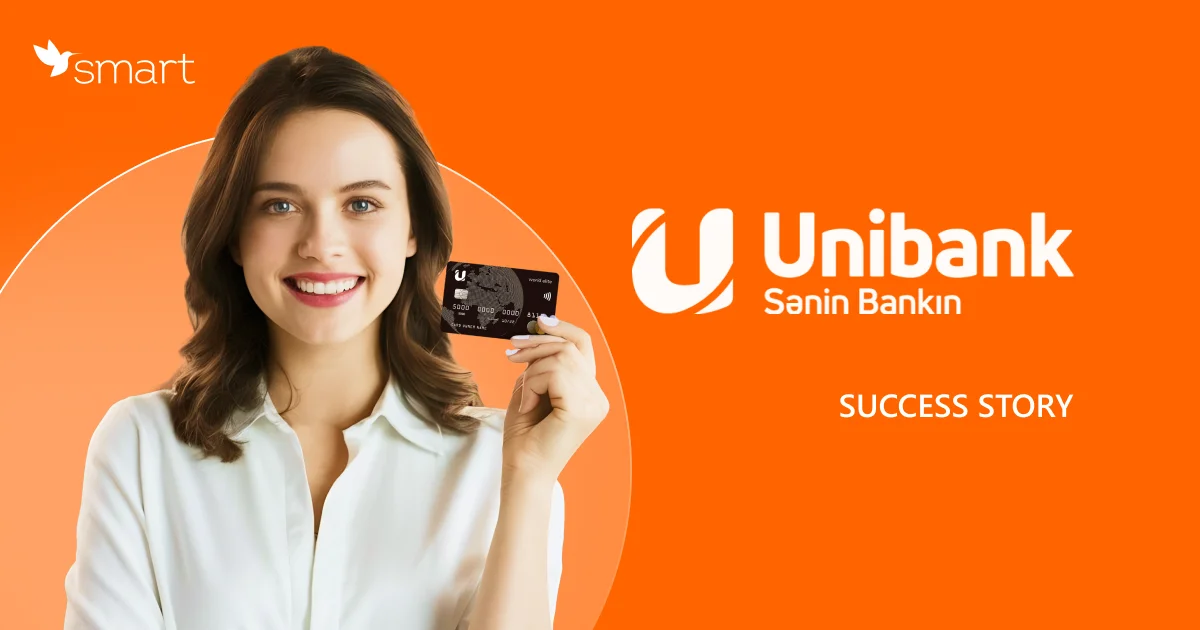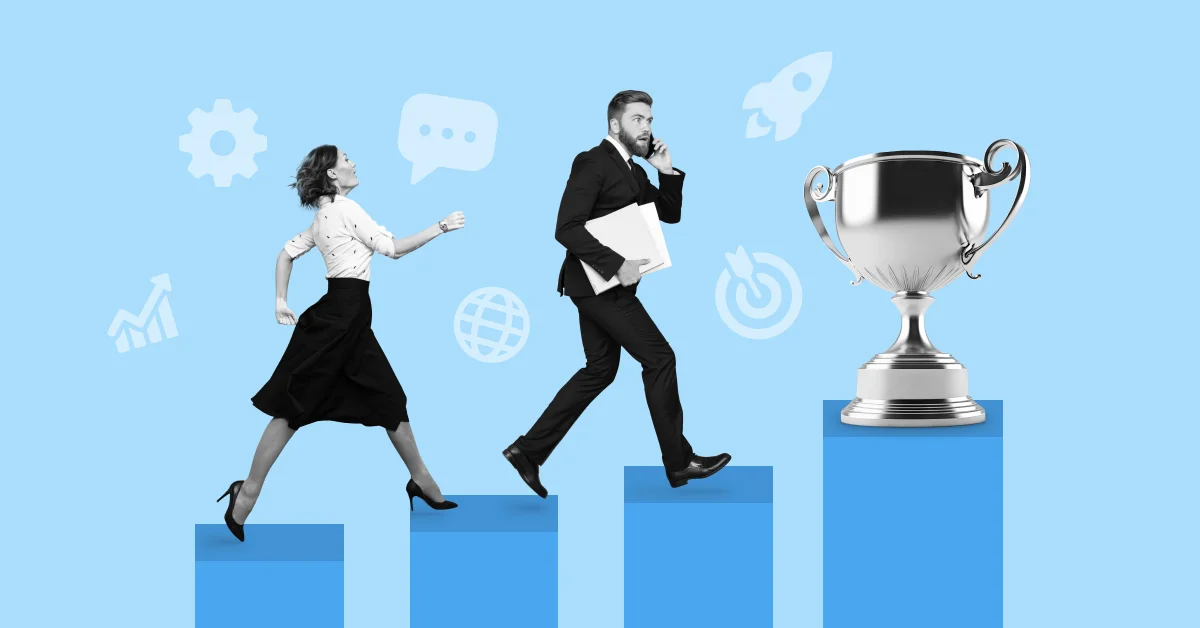Gaming technologies have been used in the corporate environment for a long time and quite successfully. They help companies find effective approaches to solving a wide range of business problems, from training and motivating employees to increasing sales.
It is not surprising that the global gamification market continues to grow rapidly. While in 2021 it was estimated at USD 11.5 billion, in 2028 it is expected to reach USD 58.7 billion. Moreover, the human capital management sector has the highest growth rate—27.8% per year on average.
Why is gamification a must‑have for HR?
Gamification is especially important for HR for a simple reason: game elements can significantly increase employee productivity and, at the same time, the level of work satisfaction.
That is why IT solutions for HR management that allow implementing game elements into corporate life are in great demand among companies. For example, in the SMART HCM & LMS solution, the “Recruiting” and “Onboarding” modules can be enhanced with the “Gamification” module, which we will discuss below.
The effectiveness of gamification in solving HR tasks is explained by the game’s unique ability to motivate without being forced. The game is exciting. In a game, a person tends to do their best, where tension is associated with pleasure, effort with joy and perseverance with drive. The player does not need motivation.
The game combines what is usually the opposite: effort and pleasure, a sense of freedom and responsibility, personal interest and team goals.
The creators of billion‑dollar businesses, such as Steve Jobs or Richard Branson, treated their work with interest, excitement, as an exciting game rather than as a routine necessity. Employees of companies can also be more successful if they perceive their duties not as a duty, but rather as the rules of the game, which they voluntarily accept to immerse themselves in an exciting team process. Such a perception of work is precisely what gaming contributes to.
What is gamification in HR?
Of course, in a corporate environment, we can’t talk about turning work into a game in the literal sense. However, in some cases, games can help solve quite complex problems. For example, modeling and team “playing” of business processes in an organization can help identify problem areas and even predict the effect of certain management decisions.
However, in the context of business, gamification usually means the introduction of only certain game elements and mechanics into work processes. These elements correspond to such important generic features of the game as ease and competition. The former means that game components are not mandatory, optional and informal. And that’s why they make employees feel that they and their colleagues are united by something more and more interesting than just official duty and work necessity. The second allows you to dilute corporate routine with elements of exciting competition. Combined, these two principles can make the work experience more interesting and motivate employees.
The most common examples of gamification in the corporate context include a system of badges and points awarded to employees for certain achievements or tasks, various rewards and leaderboards. All these subtly but effectively encourage employees to take the initiative and put more effort into developing both professional and personal skills.
How is gamification used in HR processes?
In modern organizations, game mechanics are an organic part of corporate life. They are inseparably linked to other aspects of it, such as onboarding, training, employee development, etc. Therefore, it is logical not to separately add gaming techniques to HR processes, but to immediately implement comprehensive IT solutions for talent management that already have gamification capabilities.
For example, the SMART HCM & LMS solution for building and developing HR culture has a “Gamification” module that allows you to easily dilute business routine with game elements. The tools of the module help to engage staff in more active participation in the life of the company through recognition, ratings, a reward system, and other game elements. Let’s take a closer look at them.
Features of the Gamification module in SMART HCM & LMS
The SMART business team has created and continues to improve this module, taking into account both the best global HR practices and the needs of our customers. Constant communication with business representatives and our own experience gives us an understanding of which gamification tools are best suited to solve certain HR tasks. The module contains the following elements.
Awarding badges is a great way to recognize various employee achievements, such as speeches at internal and public events, academic success, mentoring new colleagues, promoting the company on social media, interesting business ideas and suggestions, or even the best Halloween costume.

Badge names, images and descriptions can be changed by the organization, thus creating its own unique reward system. Badges can be assigned in three ways: by the administrator, by submitting an application, or automatically after the employee fulfills certain conditions set by the administrator in the SMART HCM & LMS system.
Each category of badges has a leaderboard of employees who have received the largest number of awards. You can see the history of badges received by a particular employee in the ratings. After receiving a badge, the employee automatically receives an email and a message in the messenger.
The system of badges and ratings promotes competitive behavior among colleagues and encourages them to be more active and initiative, which is the goal of this gamification tool. As practice shows, awards and ratings are an effective motivation for employees to strive for achievements in training, development and corporate projects.
While rating badges generate competitive behavior and a desire to be a winner yourself, gratitude, on the contrary, encourages recognition of the achievements of other employees. This feature provides a great opportunity to express sincere gratitude to a colleague without waiting for an opportunity or a favorable moment. For the recipient, it can be an even greater incentive and more desirable recognition than a high rating in the badge system.

In addition to the motivational effect, implementing an internal recognition system helps organizations overcome communication barriers between employees, which is especially important in the context of remote and hybrid work schedules.
Just like badges, commendations have different categories that can be edited, and new ones can be created. For example, there are options such as Achiever, Kind Heart, Awesome, Coach, Creative, Team Player, etc. There are also ratings with the history of receiving gratitude. There are three ways to send a thank‑you note: from the administrator, from a chatbot, or from the self‑service portal.
This HR gamification tool is designed to encourage employees to receive badges further. With a corporate gift shop, they can not only enjoy their high ratings but also convert them into material rewards. The thing is that when badges are received, their owners will automatically be awarded points, which they can then exchange for items from the store. This opportunity will further motivate employees to achieve better results in their studies, work and corporate activities.

The store can be filled with branded goods that employees can purchase for themselves or as a gift for someone else. The store contains a catalog with separate pages for each item with the ability to add a description and photo of the product from different angles. For a convenient search, you can filter products by category, price, or name.
On their own store page, each employee will be able to see how many points they have been awarded for receiving badges, how many have already been debited for purchases in the store and how many are left to use. Here you can also find a list of all transactions for crediting and redeeming points. By the way, there is also an option to cancel the order and return the points.
Additional features
Game mechanics in SMART HCM & LMS are not limited to the “Gamification” module. HR professionals can use game elements in other modules of the system as well. For example, as part of onboarding or employee training, you can set up various tests to test and consolidate knowledge. They can be not only in the format of control questions, but also in the form of interactive puzzles. Such tests not only contribute to better information assimilation, but also make the learning process more interesting and exciting.
Everyone wins
The introduction of gamification in HR processes and corporate life in general provides tangible benefits for everyone. For employees, game elements improve their work experience, making it more interesting and engaging. The company gets a more productive, cohesive and satisfied staff. And HR professionals have to put less effort into talent development, engagement and motivation.
Gamification allows you to harness and channel the natural desire of people of all ages to play, compete and be rewarded for winning. To do this, organizations can use ready‑made mechanics and tools that have been tested in global practice and proven to be effective. These tools are most effective when they are an organic part of comprehensive IT solutions for corporate culture development, such as SMART HCM & LMS.
If you want to learn more about how gamification can help you engage and motivate employees, leave a request for a consultation, and our experts will tell you more about the capabilities of the “Gamification” module in the SMART HCM & LMS solution.



